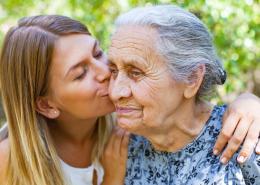Health Disparities Among Asian Americans and Pacific Islanders

Asian Americans and Pacific Islanders (AAPI) are the fastest growing racial group in the U.S. According to the 2017 U.S. Census Bureau population estimate, Asian Americans account for 18.2 million (or 5.6%) of the nation's population. The U.S. Asian population represents people with roots to more than 30 countries, each with its own unique history, culture and language.
Still, partly due to limitations of available research, many Asian American ethnic groups have not been represented in existing research. And health data on Asian Americans and Pacific Islanders are often lumped into one category, masking the meaningful differences among the numerous AAPI subgroups. Available limited data on the AAPI population, however, point to substantial health disparities within the specific subgroups.
Compared to other racial and ethnic groups, Asian Americans and Pacific Islanders are:
- Least likely to report having a personal doctor. In fact, 19.4% of Asian adults compared to 12.9% of whites report being without a usual source of health care. Cambodians and Vietnamese are three times more likely to skip doctor visits due to cost compared to all Asians or U.S. residents.
- Less likely to have blood pressure monitoring and pap smears. Cervical cancer screening rates are significantly lower among Asian American women in California compared to the general population. Only 60.5% of Vietnamese women reported receiving a pap test in the past three years compared to 86.2% of all women in California.
- Poorer quality care. Native Hawaiians and other Pacific Islanders report having poorer quality care. For example, they receive less prenatal care in the first trimester and have higher infant mortality than whites.
- Higher disease incidence. The incidence of breast cancer among AAPI women increased from 87.0 to 97.8 cases per 100,000 women from 1990 to 2001, a growth rate that has increased faster than any other racial/ethnic group.
The U.S. Department of Health and Human Services Office of Minority Health report that Asian Americans have a high prevalence of the following conditions and risk factors: chronic obstructive pulmonary disease, hepatitis B, HIV/AIDS, smoking, tuberculosis, and liver disease. Contributing factors include infrequent medical visits, language and cultural barriers, and lack of health insurance.
They also report that while Asian Americans generally have lower cancer rates than the non-Hispanic white population, disparities exist in certain types of cancer. For example, AAPI’s are twice as likely to have stomach and liver cancer than non-Hispanic whites. In addition, they are twice as likely to die from these cancers compared with non-Hispanic whites.
A recent study published in the American Journal of Public Health showed significant health disparities between certain groups of Asian Americans and non-Asians.
- U.S. Filipinos had a higher prevalence of being obese or overweight, and having high blood pressure, diabetes, or asthma compared with non-Hispanic Whites.
- One of the highest risk groups for breast cancer is U.S.-born Vietnamese women, who are four times greater of dying of breast cancer than any other AAPI groups.
- Native Hawaiians are twice as likely to be obese as whites in their state and experience significantly higher rates of diabetes and obesity as compared to other communities.
- U.S. Korean children are four times more likely to have no health insurance as compared to others.
In New York City, the overall prevalence of smoking is 18.6% in whites and 14.1% in Asian Americans. However, when data was separated within AAPI subgroups, the actual prevalence of smoking was higher in some groups. For example, prevalence of smoking in Korean Americans was 35.5%.
It’s key for Asian Americans and Pacific Islanders to understand the importance of annual doctor visits and preventive care. Though there may be many challenging barriers to healthcare, AAPIs are encouraged to find healthcare providers who speak the same language or understand specific cultural barriers, utilize on-site (or telephone) professional interpreter services, or bring a trusted family member or friend to medical visits.





